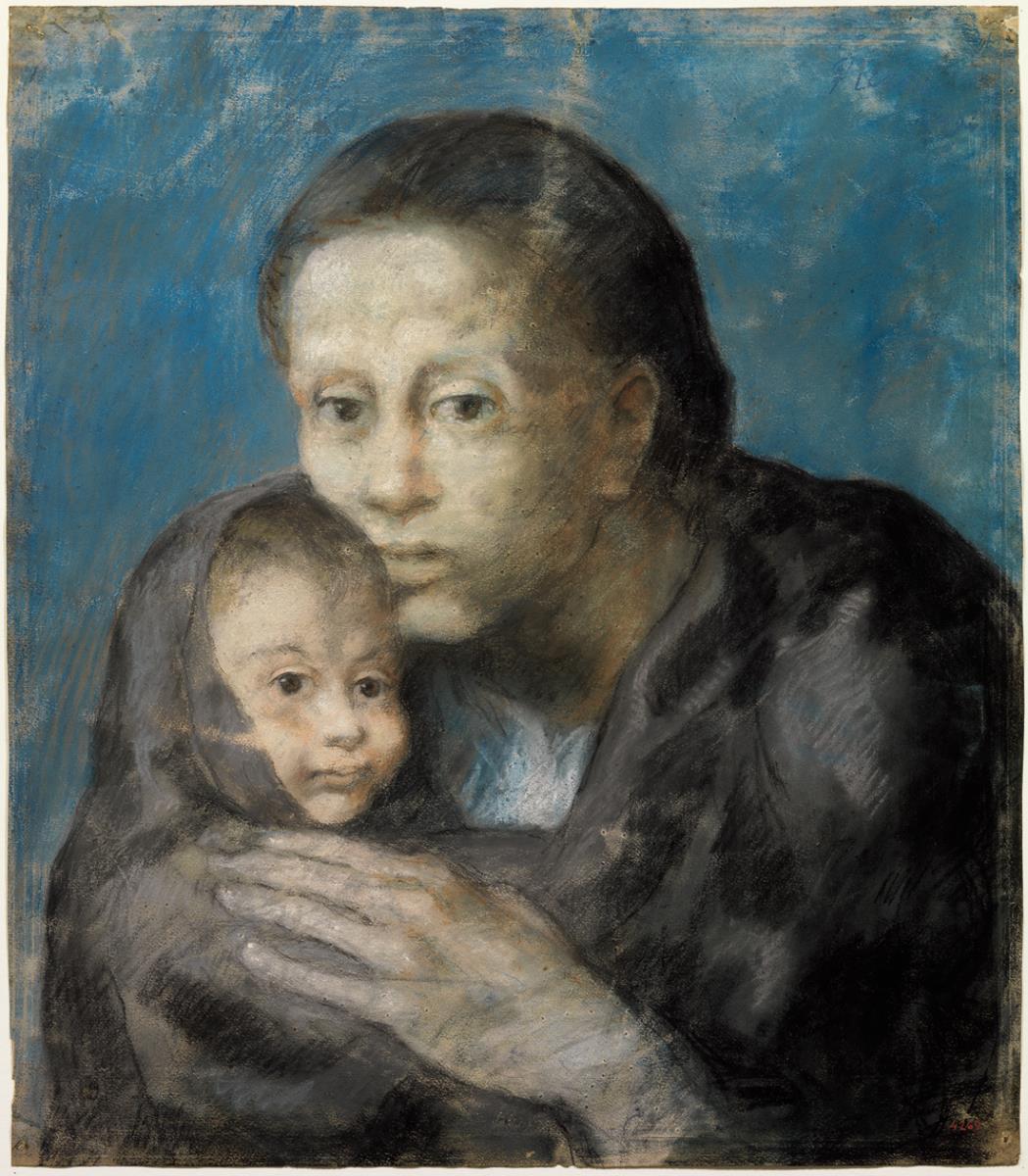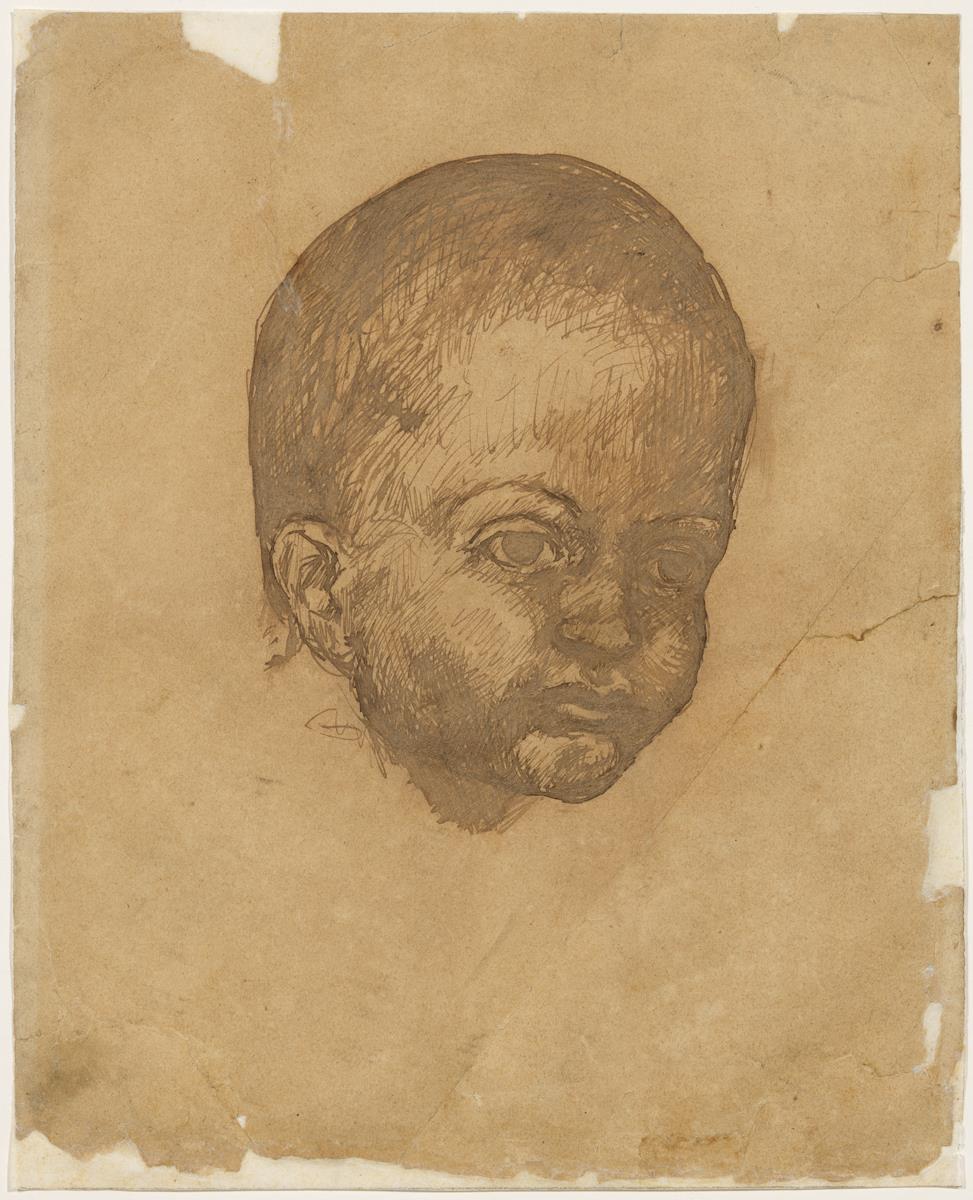The Disinherited Ones

The Disinherited Ones
The Disinherited Ones
The subject of mother and child runs through the various stages of Picasso’s artistic production, although it appears more frequently in his early works. The wide range of blue shades in this pastel creates a cool, dark atmosphere within which the brightness of the flesh tones used in the faces instils life into the characters. Looking in different directions, both observe their surroundings with eyes wide open, each in a specific pose: the gesture of the mother’s hand and the clothes covering the child’s head are signs of protection, and the infant appears calm.
While the expressiveness of the work lies precisely in the gazes of mother and son, its symbolism resides in the woman’s hand, which reveals a slight influence of El Greco. The lengthening and disproportion of the hand are repeated in other works of the same period such as "The Frugal Repast" (MPB 110.011) and "The Madman" (MPB 4.272), in which the artist portrays members of the underprivileged social classes. During the Blue Period Picasso showed a renewed interest in the robustness of bodies. Whether his figures verged on classical modelling or quite the opposite (as in the aforementioned lack of proportion of certain shapes), his sculptural volumes are completely integrated into his pictorial works.
"The Destitute" presents a new vision of the artist’s social environment in the early twentieth century, and is characterised by a new form of humanism in which classical beauty portrayed in ideal proportions disappears in favour of feelings and emotions.
47 cm x 40 cm
Purchase Plandiura, 1932
MPB 4.269





